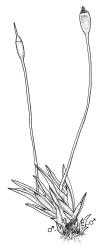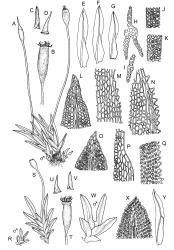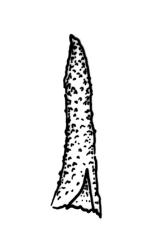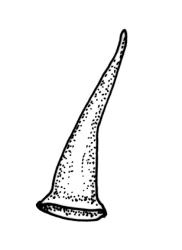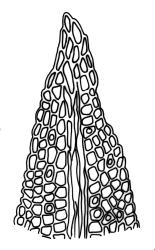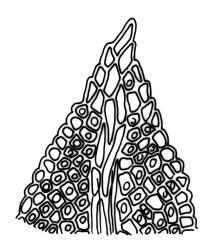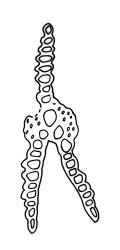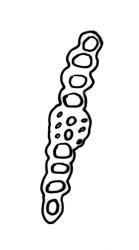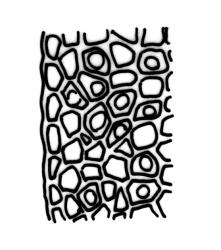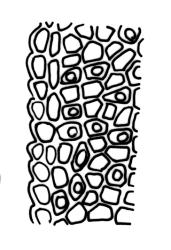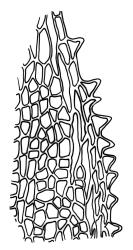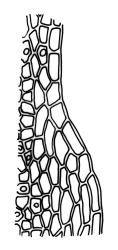Leaves linear-lanceolate; apex acute to acuminate; vaginant laminae partially closed to open; margins crenulate to denticulate on dorsal and apical laminae, mostly irregularly denticulate, rarely entire (in aquatic specimens) on vaginant laminae. Costa usually percurrent to shortly excurrent, occasionally failing below the leaf apex, bryoides-type in cross-section.
Perichaetial leaves with distal region of vaginant lamina margins entire to irregularly denticulate, vaginant lamina cells longer than those of apical and dorsal laminae, often with an intramarginal border of rectangular cells. Setae 2.0–5.0(–10.0) mm. Peristome teeth 33–45 µm wide at base, with ornamentation as per species. Calyptra usually scabrous. Spores 7.5–12 µm.
Wilson 1854, pl. 83, fig. 6; Scott & Stone 1976, pls 7–9 (pro parte); Beever & Stone 1999, fig. 6, a–m; Beever et al. 2002, p. 72, figs 1–6; Stone & Catcheside 2012.
A common taxon growing on soil, especially as a pioneer species on eroding vertical soil banks in indigenous forest, occasionally on rock. An aquatic form occurs on rock in the splash zone of forest streams. Fissidens tenellus var. tenellus commonly grows mixed with other species of Fissidens, especially F. curvatus, but also with F. asplenioides, F. capitatus, F. dealbatus, F. leptocladus, F. linearis var. angustifolius, F. pallidus, and F. taxifolius. Other moss associates include Bryum sauteri, Ditrichum difficile, Hypnodendron arcuatum, Mittenia plumula, and Weissia controversa.
This variety has been recorded from near sea level to 950 m (Te Aroha, S Auckland L.D.).



